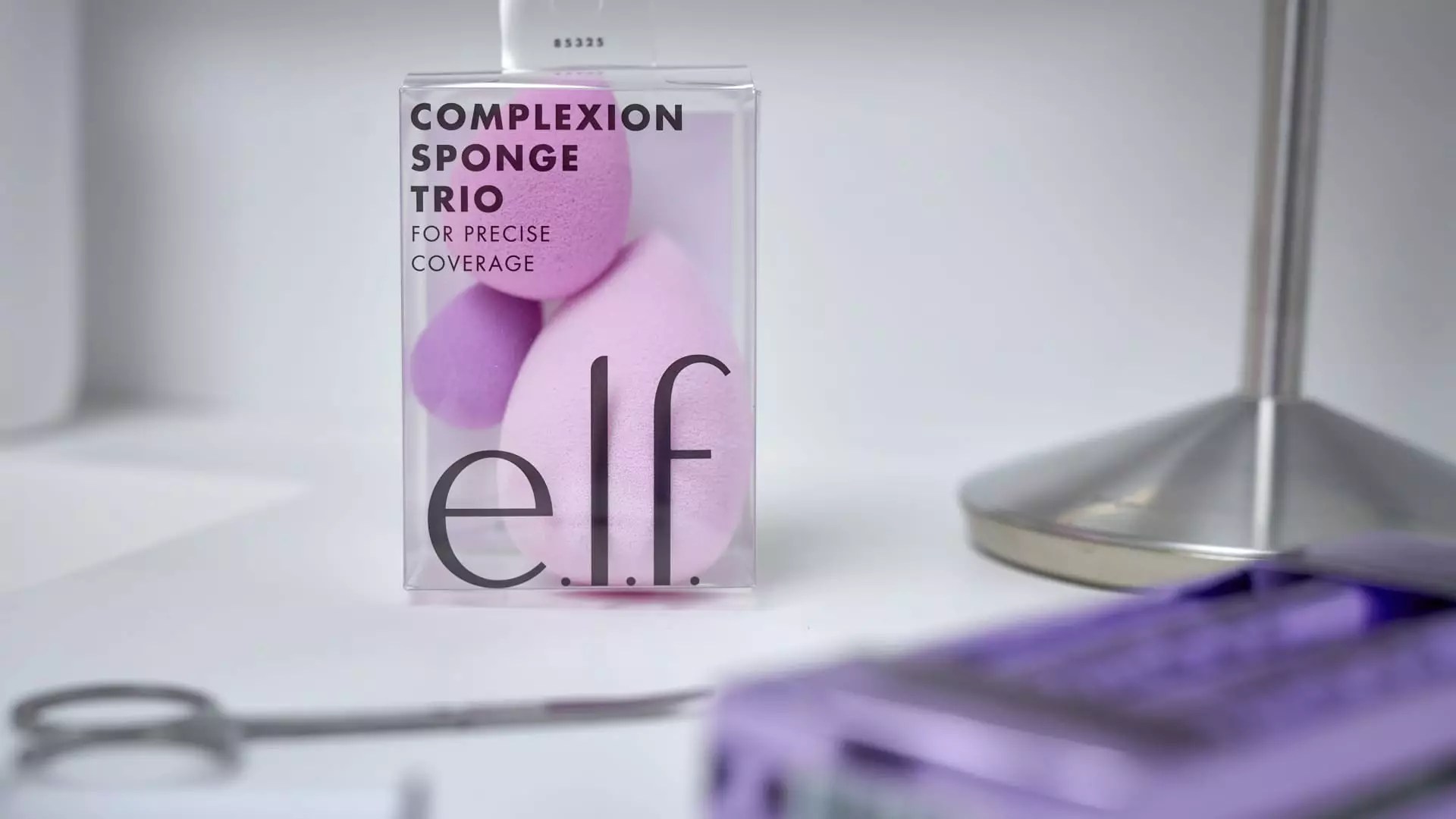E.l.f. Beauty, previously heralded as a beacon of innovation and growth in the cosmetics industry, has recently reported a notable downturn in its performance. The company announced a 36% decline in profits and sales trends that fell short of expectations as of January. Such a stark contrast to its prior robust growth raises the question: what has changed in the market for this iconic brand?
During the holiday season, sales reportedly exceeded forecasts, which would typically signal a positive outlook. However, the underlying profit figures demonstrated a decline relative to analysts’ predictions, illustrating a dissonance between revenue and profitability. Following this news, E.l.f. Beauty experienced a concerning 20% drop in its share price during after-hours trading, a clear indication of investor anxiety about the company’s changing fortunes.
Analyzing the financial results for the fiscal third quarter, E.l.f. reported adjusted earnings per share (EPS) of 74 cents, narrowly missing Wall Street’s expectations of 75 cents. In terms of revenue, the company generated $355 million—significant growth from $271 million a year ago, yet still lower than anticipated. Net income also decreased, falling from $26.9 million or 46 cents per share in the previous fiscal period to $17.3 million, indicating that growth in sales hasn’t translated into similar profit margins.
Furthermore, the firm’s guidance for the remaining quarter appears even gloomier. E.l.f. has revised its full-year sales expectations down to a range of $1.3 billion to $1.31 billion, missing prior estimates. This revision poses questions regarding future profitability and growth within the competitive beauty landscape.
E.l.f.’s CEO, Tarang Amin, addressed these challenges during a recent CNBC interview, attempting to shift the focus from internal company issues to broader market dynamics. He pointed out an overall decline of 5% in mass cosmetics sales during January, attributing this to several external factors. The aftermath of significant events, including natural disasters and shifts in social media engagement, has evidently altered consumer behavior and purchasing patterns.
Amin highlighted the impact of reduced online discussions about beauty, particularly referencing the LA wildfires and concerns surrounding TikTok’s future. With beauty influencers and social commentary playing pivotal roles in shaping consumer trends, any decline in online engagement can effectively stifle product interest and sales.
In addition to market dynamics, E.l.f. Beauty faces pressures from changes in the global supply chain, particularly with the introduction of new tariffs on imports from China. Given that approximately 80% of E.l.f.’s supply chain operations are based in the region, Amin acknowledged the uncertainty this poses. However, he expressed cautious optimism, noting that the new 10% duty was less severe than initially anticipated.
While it remains unclear if price increases will be necessary to counteract these pressures, the company is committed to leveraging its profits to enhance operational efficiencies, such as inventory management and infrastructure improvements. This strategic pivot suggests a focus on sustainability in growth and long-term health for the brand, rather than solely chasing immediate profitability.
Despite the current challenges, it’s essential to recognize E.l.f. Beauty’s historical context within the beauty industry. The brand has made significant strides in democratizing high-quality cosmetics at approachable price points, paving the way for a diverse customer base. Its unique marketing strategies and product offerings have won over consumers, but the slowdown in growth is indicative of an evolving ecosystem where even established brands must continuously innovate.
As the company faces inevitable headwinds, navigating the changing landscape will be paramount. The beauty sector will likely remain unpredictable, influenced by digital engagement, external economic factors, and shifts in consumer interests. Thus, E.l.f. Beauty’s ability to adapt and respond to these trends will shape its future trajectory significantly.
While E.l.f. Beauty is currently experiencing turbulence, the brand holds potential for recovery. By maintaining a focus on consumer engagement and operational resilience, E.l.f. can not only navigate these challenges but potentially emerge stronger in a transformed beauty marketplace.


Leave a Reply